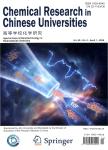Advances in Nanomaterial-microbe Coupling System for Removal of Emerging Contaminants
作者机构:CAS Key Laboratory of Urban Pollutant ConversionInstitute of Urban EnvironmentChinese Academy of SciencesXiamen361021P.R.China University of Chinese Academy of SciencesBeijing100049P.R.China College of Life SciencesFujian Agriculture and Forestry UniversityFuzhou350002P.R.China
出 版 物:《Chemical Research in Chinese Universities》 (高等学校化学研究(英文版))
年 卷 期:2023年第39卷第3期
页 面:389-394页
核心收录:
学科分类:083002[工学-环境工程] 0830[工学-环境科学与工程(可授工学、理学、农学学位)] 08[工学] 0703[理学-化学]
基 金:supported by the National Natural Science Foundation of China(Nos.42021005 22025603 22236007).
主 题:Emerging contaminant Nanomaterial Microbe Extracellular electron transfer
摘 要:Emerging contaminants are characterized by toxicity,environmental durability,and bioaccumulation.How to effectively remove them has attracted tremendous attention in the field of environmental science and engineering.Nanomaterial-microbe coupling systems driven by photo-electrochemistry have high degradation efficiency and low cost by combining the advantages of nanomaterials and microorganisms in pollutant treatment.This review summarizes the recent development of the nanomaterial-microbe system for the removal of emerging contaminants,which is divided into exogenous nanomaterial-microbe and endogenous nanomaterial-microbe.The interaction mechanism of materials and microorganisms is addressed from the particular perspective of extracellular electron transfer and redox reactions,and the advantages and challenges of the pollutants treatment are analyzed.Furthermore,future applications in the degradation of emerging contaminants in environmental fields have been prospected.



